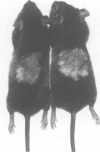Abstract
Pyridoxine deficiency leads to impairment of immune responses. It appears that the basic derangement is the decreased rate of production of one-carbon units necessary for the synthesis of nucleic acids. The key factor is a pyridoxine enzyme, serine hydroxymethyltransferase. This enzyme is very low in resting lymphocytes but increases significantly under the influence of antigenic or mitogenic stimuli, thus supplying the increased demand for nucleic acid synthesis during an immune response. Serine hydroxymethyltransferase activity is depressed by deoxypyridoxine, a potent antagonist of pyridoxal phosphate, and also by known immunosuppressive or antiproliferative agents. The combination of these agents is additive. Our results lead us to suggest the following medical applications: (a) combination of deoxypyridoxine with immunosuppressive or chemotherapeutic drugs may be effective in cases of immunosuppressive therapy or organ transplantation, (b) the development of special agents directed against the serine hydroxymethyltransferase apoprotein may prove to be a valuable medical tool, since this enzyme presents an excellent target for chemotherapy, (c) lymphocytes of individual patients could be used to design tailor-made specific immunosuppressive or chemotherapeutic treatment, and (d) the serine hydroxymethyltransferase activity of lymphocyte culture presents an excellent indicator for the evaluation of potency of immunosuppressive, chemotherapeutic or genotoxic compounds in a simple and rapid test.
Full text
PDF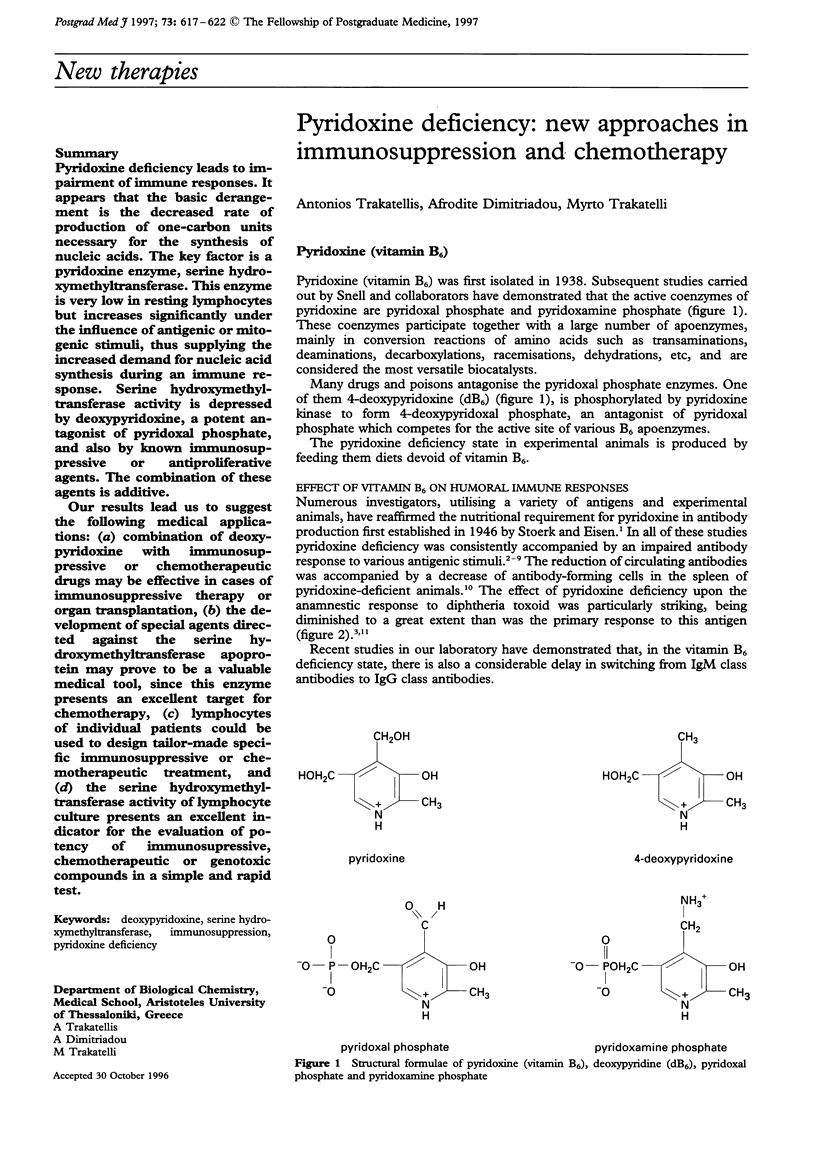

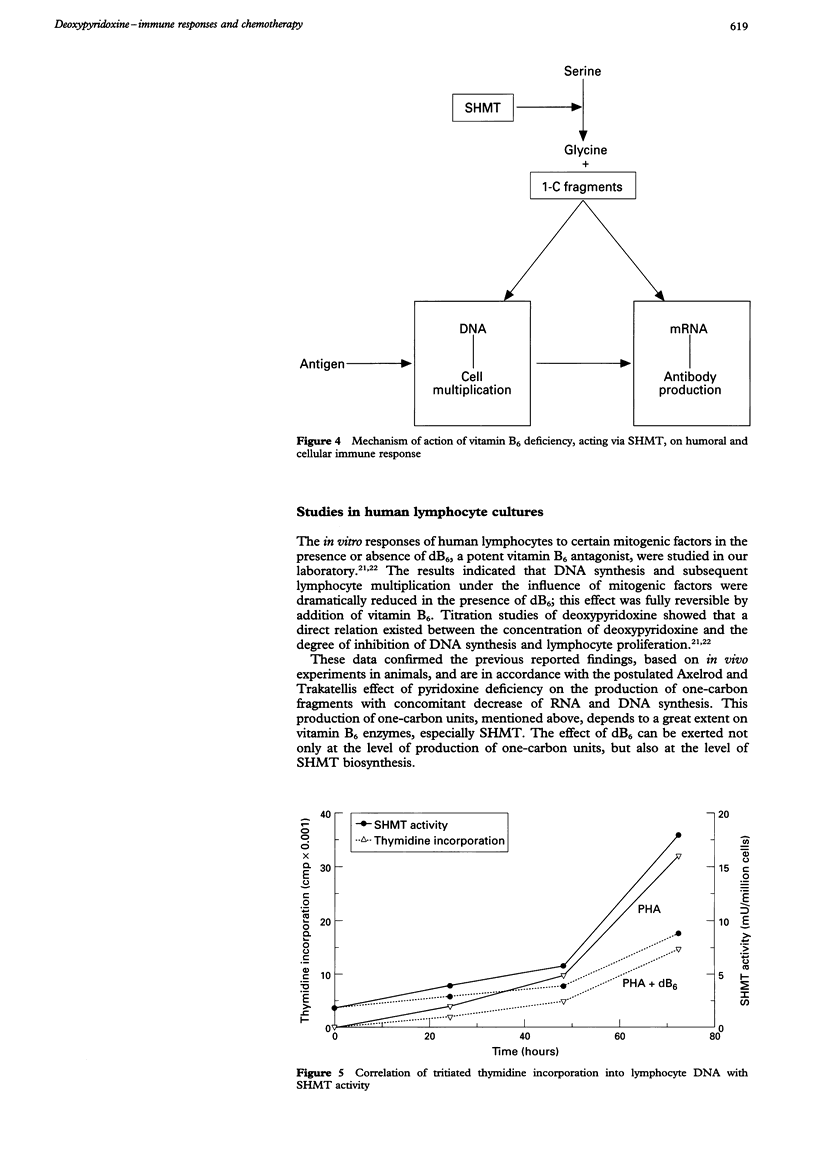
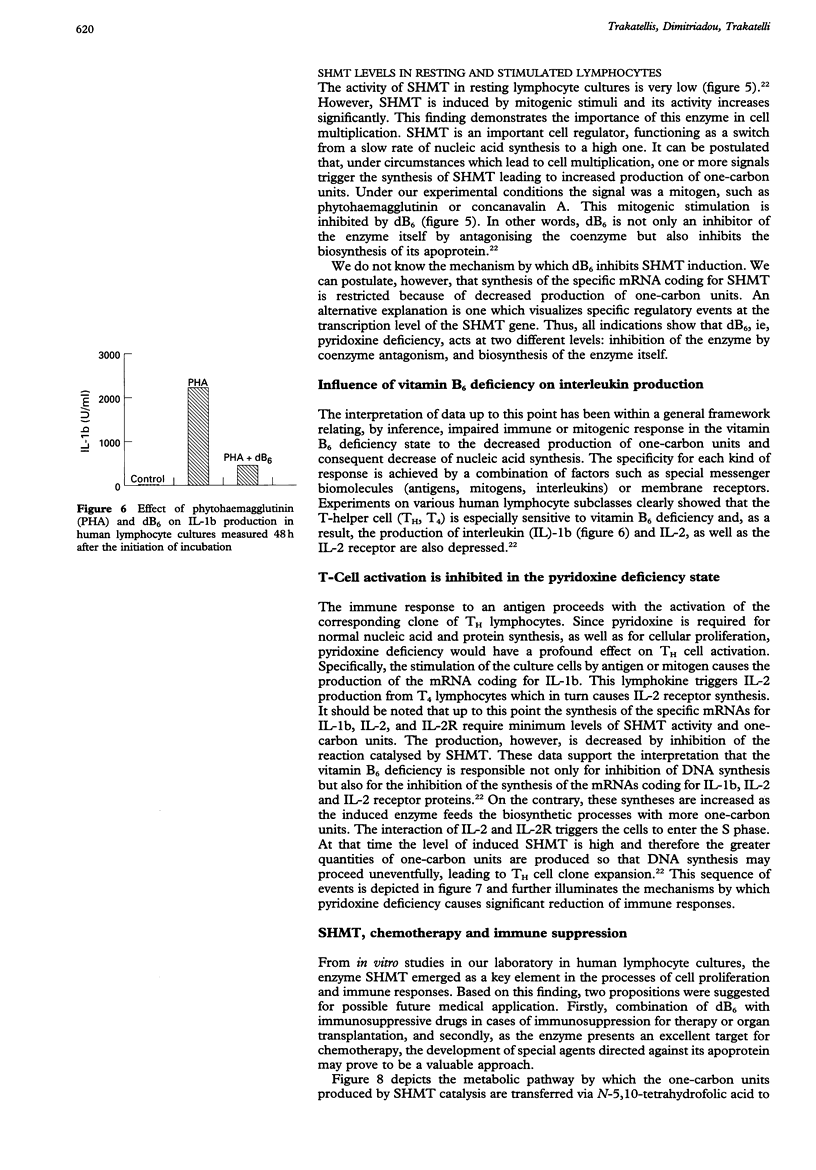
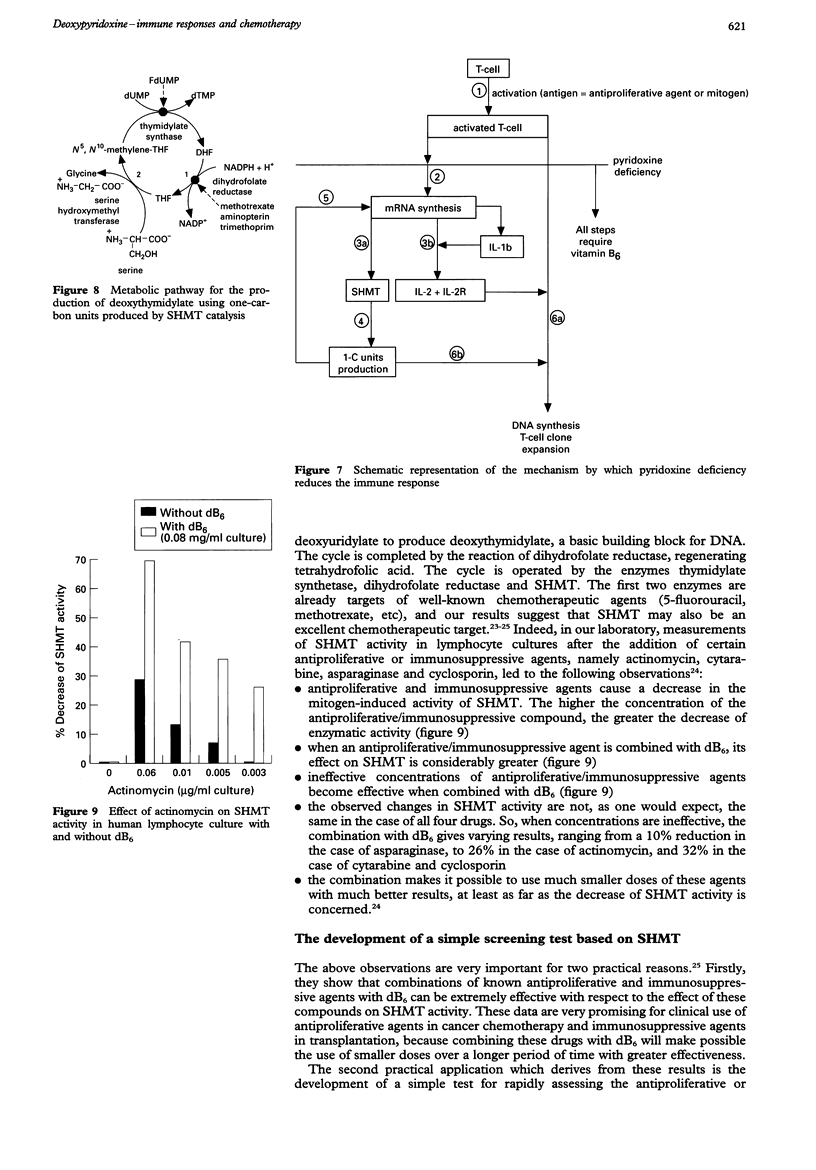
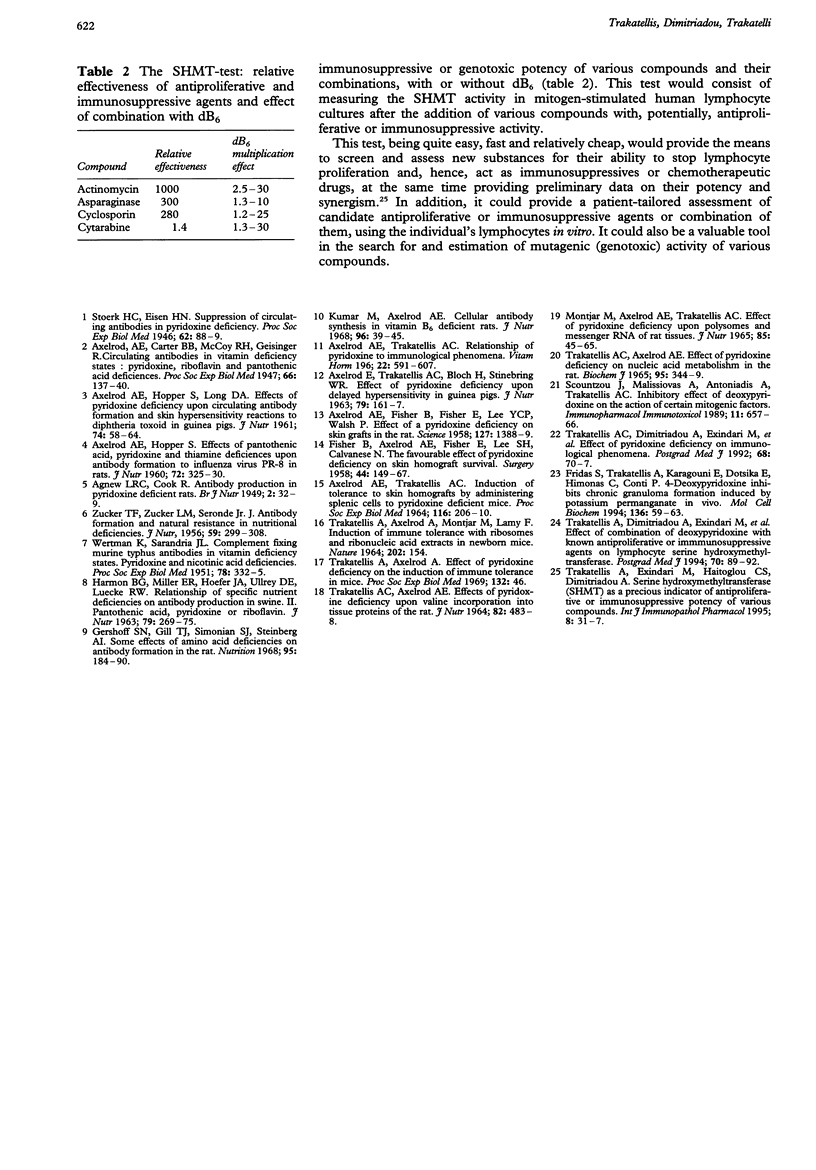
Images in this article
Selected References
These references are in PubMed. This may not be the complete list of references from this article.
- AXELROD A. E., FISHER B., FISHER E., LEE Y. C., WALSH P. Effect of a pyridoxine deficiency on skin grafts in the rat. Science. 1958 Jun 13;127(3311):1388–1389. doi: 10.1126/science.127.3311.1388. [DOI] [PubMed] [Google Scholar]
- AXELROD A. E., HOPPER S. Effects of pantothenic acid, pyridoxine and thiamine deficiencies upon antibody formation to influenza virus PR-8 in rats. J Nutr. 1960 Nov;72:325–330. doi: 10.1093/jn/72.3.325. [DOI] [PubMed] [Google Scholar]
- AXELROD A. E., TRAKATELLIS A. C. INDUCTION OF TOLERANCE TO SKIN HOMOGRAFTS BY ADMINISTERING SPLENIC CELLS TO PYRIDOXINE-DEFICIENT MICE. Proc Soc Exp Biol Med. 1964 May;116:206–210. doi: 10.3181/00379727-116-29202. [DOI] [PubMed] [Google Scholar]
- FISHER B., AXELROD A. E., FISHER E. R., LEE S. H., CALVANESE N. The favorable effect of pyridoxine deficiency on skin homograft survival. Surgery. 1958 Jul;44(1):149–167. [PubMed] [Google Scholar]
- Fridas S., Trakatellis A., Karagouni E., Dotsika E., Himonas C., Conti P. 4-Deoxypyridoxine inhibits chronic granuloma formation induced by potassium permanganate in vivo. Mol Cell Biochem. 1994 Jul 13;136(1):59–63. doi: 10.1007/BF00931605. [DOI] [PubMed] [Google Scholar]
- Gershoff S. N., Gill T. J., 3rd, Simonian S. J., Steinberg A. I. Some effects of amino acid deficiencies on antibody formation in the rat. J Nutr. 1968 Jun;95(2):184–190. doi: 10.1093/jn/95.2.184. [DOI] [PubMed] [Google Scholar]
- HARMON B. G., MILLER E. R., HOEFER J. A., ULLREY D. E., LUECKE R. W. Relationship of specific nutrient deficiencies to antibody production in swine. II. Pantothenic acid, pyridoxine or riboflavin. J Nutr. 1963 Mar;79:269–275. doi: 10.1093/jn/79.3.269. [DOI] [PubMed] [Google Scholar]
- Howard L. M., Markus H. Pseudo-obstruction secondary to anticholinergic drugs in Parkinson's disease. Postgrad Med J. 1992 Jan;68(795):70–71. doi: 10.1136/pgmj.68.795.70. [DOI] [PMC free article] [PubMed] [Google Scholar]
- MONTJAR M., AXELROD A. E., TRAKATELLIS A. C. EFFECT OF PYRIDOXINE DEFICIENCY UPON POLYSOMES AND MESSENGER RNA OF RAT TISSUES. J Nutr. 1965 Jan;85:45–51. doi: 10.1093/jn/85.1.45. [DOI] [PubMed] [Google Scholar]
- Scountzou J., Malisiovas N., Antoniadis A., Trakatellis A. Inhibitory effect of deoxypyridoxine on the action of certain mitogenic factors. Immunopharmacol Immunotoxicol. 1989;11(4):657–666. doi: 10.3109/08923978909005393. [DOI] [PubMed] [Google Scholar]
- TRAKATELLIS A. C., AXELROD A. E. EFFECT OF PYRIDOXINE DEFICIENCY ON NUCLEIC ACID METABOLISM IN THE RAT. Biochem J. 1965 May;95:344–349. doi: 10.1042/bj0950344. [DOI] [PMC free article] [PubMed] [Google Scholar]
- TRAKATELLIS A. C., AXELROD A. E. EFFECT OF PYRIDOXINE DEFICIENCY UPON VALINE INCORPORATION INTO TISSUE PROTEINS OF THE RAT. J Nutr. 1964 Apr;82:483–488. doi: 10.1093/jn/82.4.483. [DOI] [PubMed] [Google Scholar]
- TRAKATELLIS A. C., AXELROD A. E., MONTJAR M., LAMY F. INDUCTION OF IMMUNE TOLERANCE WITH RIBOSOMES AND RIBONUCLEIC ACID EXTRACTS IN NEW-BORN MICE. Nature. 1964 Apr 11;202:154–157. doi: 10.1038/202154a0. [DOI] [PubMed] [Google Scholar]
- Trakatellis A. C., Axelrod A. E. Effect of pyridoxine deficiency onthe induction of immune tolerance in mice. Proc Soc Exp Biol Med. 1969 Oct;132(1):46–49. doi: 10.3181/00379727-132-34145. [DOI] [PubMed] [Google Scholar]
- WERTMAN K., SARANDRIA J. L. Complement-fixing murine typhus antibodies in vitamin deficiency states. II. Pyridoxine, and nicotinic acid deficiencies. Proc Soc Exp Biol Med. 1951 Oct;78(1):332–335. doi: 10.3181/00379727-78-19065. [DOI] [PubMed] [Google Scholar]
- ZUCKER T. F., ZUCKER L. M., SERONDE J., Jr Antibody formation and natural resistance in nutritional deficiencies. J Nutr. 1956 Jun 10;59(2):299–308. doi: 10.1093/jn/59.2.299. [DOI] [PubMed] [Google Scholar]



